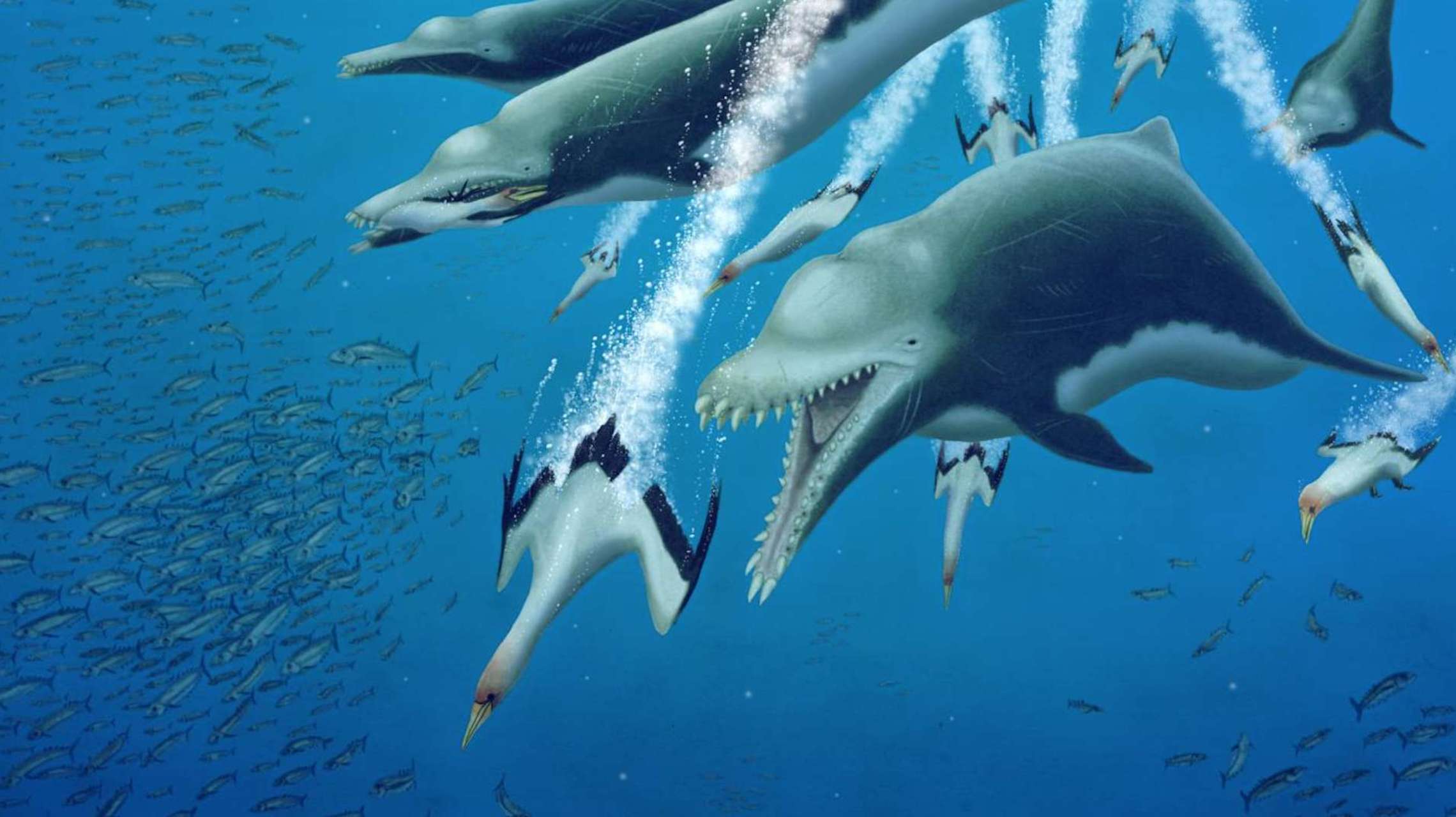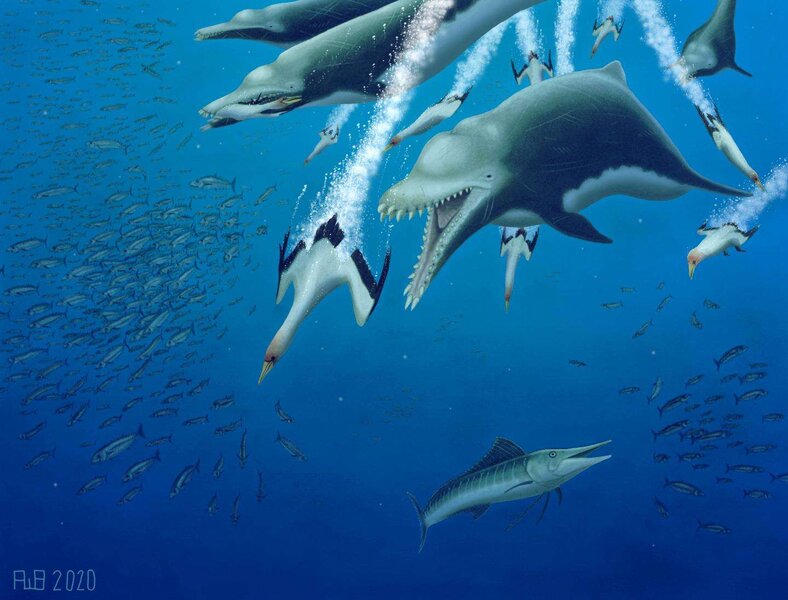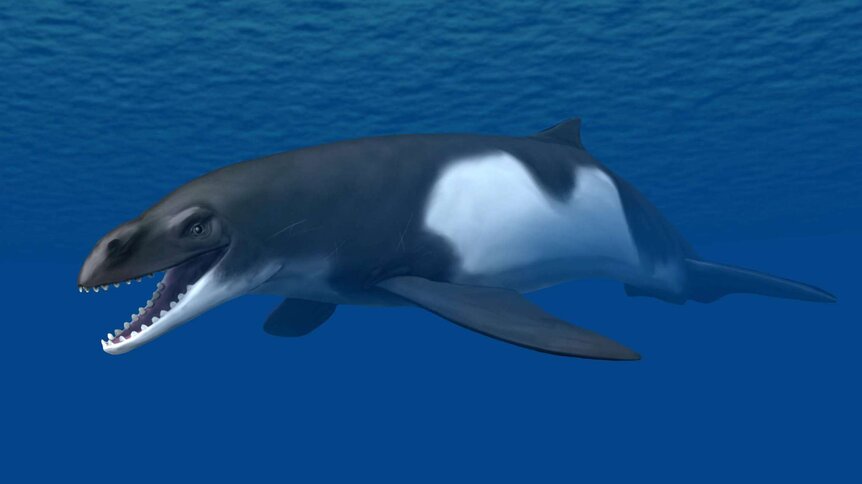Create a free profile to get unlimited access to exclusive videos, sweepstakes, and more!
This savage prehistoric dolphin was the toothy terror of the primeval seas

The playful, personable TV porpoise Flipper would have hightailed it out of the water if it had ever encountered a pod of these prehistoric dolphins back in the Oligocene Epoch circa 33.9 to 23 million years ago.
A new study led by College of Charleston researchers has identified and confirmed the existence of Ankylorhiza tiedemani, a primeval dolphin that swam ancient seas as a ferocious apex predator similar to the intimidating killer whales of modern times.
In a detailed paper published last week in the online journal Current Biology, scientists have also concluded that Ankylorhiza tiedemani was one of the first cetaceans (marine mammals like dolphins, porpoises, and whales) to use echolocation as a means of navigating underwater — a method of emitting calls to acquire the location of far-off objects and obstructions by interpreting the return sound waves bounced back.
According to the study, the 15-foot-long, nearly intact fossil specimen was first located by paleontologist Mark Havenstein in the '90s, where it was embedded in rock formations at a housing subdivision construction site in South Carolina.
The Ankylorhiza's specific body type — shorter and more sturdy snout, tooth wear, and vertebral formation — show it was the first Odontocete (toothed whale) predator that could chow down on both small and large prey. Such streamlining also allowed it to swim swifter than most other whales of the period, fulfilling an ecological niche in the same role as pack-hunting Orcas.
Ankylorhiza's skeleton indicates that perhaps features belonging to flippers and tail locomotion could have evolved more recently than 35 million years ago. Oligocene Epoch whale skeletons are extremely rare, and that fact has muddied the research waters for understanding the evolutionary path of modern whales' fluke-powered ability to propel themselves while under control by their agile forelimbs.
"If you're a mammal or reptile invading the water, there's only a certain number of things you can do in order to evolve efficient swimming," explained study co-author Robert Boessenecker of the College of Charleston in South Carolina. "And those same features have convergently evolved again and again in different groups. In this case, they even continued evolving into parallel lineages with common ancestry.
"Whales and dolphins have a complicated and long evolutionary history, and at a glance, you may not get that impression from modern species. The fossil record has really cracked open this long, winding evolutionary path, and fossils like Ankylorhiza help illuminate how this happened."
Due to a crucial cranial joint that allowed a wide range of motion identical to today's killer whale, Ankylorhiza was the first echolocating toothed whale to become an alpha predator. Its large, thick-rooted teeth came in handy when thrashing prey, exactly as Orcas do. Lethal incisor tusks could also be employed to smash small creatures like a battering ram.
After a long reign prowling prehistoric oceans, Ankylorhiza finally became extinct some 23 million years ago, letting shark-toothed dolphins (above) and giant killer sperm whales evolve and take up the mantle inside of the following five million years.
"There are many other unique and strange early dolphins and baleen whales from Oligocene aged rocks in Charleston, South Carolina," Boessenecker said. "Because the Oligocene epoch is the time when filter feeding and echolocation first evolved, and since marine mammal localities of that time are scarce worldwide, the fossils from Charleston offer the most complete window into the early evolution of these groups."





























